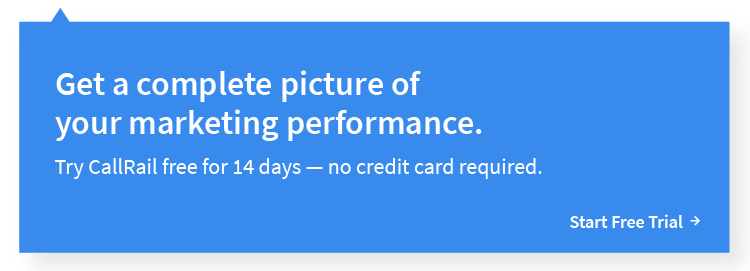We live in a smartphone-centric, digital nomad-friendly world, and we expect our mobile devices to provide easy, frictionless pathways to the information we need to find and the products we need to buy. And yet we’ve all experienced the friction that’s all too common when it comes to inbound call marketing.
You know the scene: You’re on your iPhone trying to purchase a pair of swanky socks or download an e-book on account-based marketing. Unfortunately, you end up clicking away in frustration because the site isn’t mobile-friendly or there’s a ridiculously long form you have to fill out.
There’s got to be a better way — for shoppers and for your business.
This guest post was written by our friends at SmartBug Media.
Finding the best inbound call marketing strategy
Today, more than 52 percent of all web activity happens on mobile phones and nearly 32 percent of all e-commerce purchases occur on a mobile device. People love making purchases and getting information on the go, but brand interactions have to be smooth and easy.
Although many companies are working hard to create compelling landing pages, send open-worthy email campaigns, and publish educational e-books, they’re missing the boat if they’re not using inbound call marketing. Just as Google Analytics allows marketers to understand which keywords drive higher click-through rates, inbound call marketing allows marketers to track call-based revenue back to search ads and keywords.
Inbound call marketing gives marketers a complete picture of how their search initiatives are performing by connecting calls with their search initiatives. Here is how it works:
- Campaign-specific phone numbers and pooled promotional numbers are tied to specific search terms.
- A prospect performs a keyword search.
- A promotional phone number specific to that keyword is assigned for a specific period of time.
- Calls using that phone number are tracked, allowing marketers to see which keywords are driving the most calls and the best leads.
The biggest benefit for the consumer that comes with inbound call marketing is that it gets rid of the cumbersome and time-consuming task of having to fill out a form. It just makes sense to give prospects an option to place a call.
Inbound call marketing providers understand that many small and medium-sized businesses (SMBs) have an online presence but don’t actually sell their products and services online. This is why allowing phone calls — and tracking where and how those calls were initiated — can provide valuable data to help budget ad spend.
Here at SmartBug, our inbound call marketing is all about CallRail, because of the seamless integrations with HubSpot and Salesforce that automatically create leads from inbound calls. Plus, CallRail’s granular reporting shows which ads, keywords, and landing pages are converting inbound leads.
With the right inbound call marketing solution in place, marketers can track calls as easily as they can track clicks. Here are five ways to use inbound call marketing to attract prospects:
1) Display a dynamic phone number
This strategy can help marketers indicate how many inbound calls are initiated by people visiting a specific page on a website. For example, consider adding a dynamic custom number on the homepage and a different one on your Facebook page so you can track which leads are more qualified and actually convert.
2) Include a campaign-specific phone number on email campaigns
If you’re curious as to whether your email calls to action (CTAs) and open rates are translating into leads, use campaign-specific phone numbers to track all of the activity.
3) Split test keywords in either organic search or PPC campaigns
Testing will help you determine which keywords generate the most conversions so you can determine which kind of ad is generating the most traffic—and calls—and potentially adjust pay-per-click (PPC) spend.
4) Send traffic to a landing page
You can better determine how much traffic and how many calls are being initiated from a specific landing page by displaying a campaign-specific phone number.
5) Record calls to ensure quality assurance
Recording calls will help you ensure a higher level of customer service, which customers expect and companies need. The recorded calls will also work well for training purposes.
For marketers, data is power. Inbound call data opens a window into all channels of your media spend, which is critical for understanding where and how your customers come to you, as well as which activities produce the highest conversion rates. With inbound call data in hand, marketers gain deep insight into which campaigns are most effective and which aren’t in order to plan and spend more effectively.
The post 5 ways call tracking can help manage your inbound prospects appeared first on CallRail.


